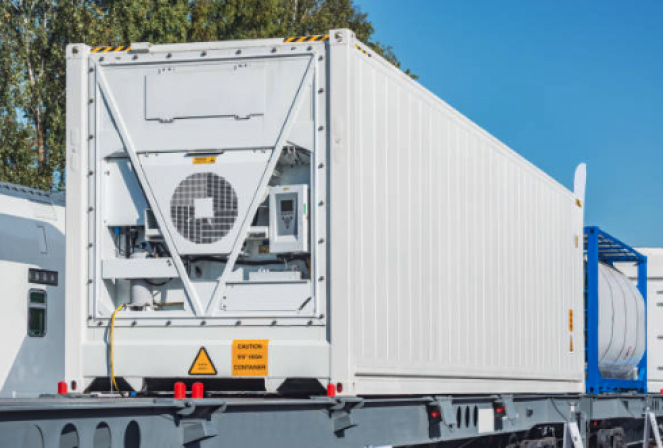8 Truck Driver Tips For Avoiding and Preventing Accidents
Commercial trucks are large and powerful. Driving near an 18-wheeler can be intimidating and even dangerous if motorists are unaware of crucial safety practices. Do you know how to navigate around trucks and share the road safely? If you are looking for a review of safe driving techniques, you have come to the right place. At QFS Transportation, safety is the top priority for our drivers and other motorists on the road. This guide shares 8 truck driver tips for avoiding and preventing accidents.
Commercial trucks are large and powerful. Driving near an 18-wheeler can be intimidating and even dangerous if motorists are unaware of crucial safety practices. Do you know how to navigate around trucks and share the road safely? If you are looking for a review of safe driving techniques, you have come to the right place. At QFS Transportation, safety is the top priority for our drivers and other motorists on the road. This guide shares 8 truck driver tips for avoiding and preventing accidents.
1. Stay Out of Blind Spots
All vehicles have blind spots, but the blindspots of commercial trucks are much more significant. As much as possible, stay out of the following areas and take extra caution when you need to be in these zones:
Twenty feet in front of the truck
Thirty feet behind the truck
On the right side of the truck, two lanes wide.
On the left side of the truck, from the front of the truck near the driver to about halfway back the length of the trailer.
A good rule of thumb is that if you can’t see the driver in the truck’s side mirrors, they will likely not see you. Avoid blind spots by allowing plenty of space between your car and a truck.
2. Pass with Caution
A large commercial truck cannot stop as quickly or maneuver as easily as other vehicles, so truck drivers need more time to respond to the movements of other cars on the road. Here are some tips to follow when passing trucks:
- It is best to pass trucks when the road is relatively flat because trucks naturally increase speed on a decline and reduce speed on an incline. While it may be tempting to get around a truck when it’s slowing downhill, ensure you are well ahead of the truck before doing so, especially if the road levels off or declines. In both of these instances, the truck will naturally speed back up, and it is not a good idea to get into a situation where the truck then has to pass you to maintain speed.
- Another essential rule to follow is to pass trucks on the left. Not only is this the rule of the road, it also allows the driver to see you. Additionally, waiting to merge back into the lane in front of the driver is vital until you can see the driver in your rearview mirror.
- If a truck does have to pass you, stay on the right and slow down to make it easier for the truck to go by. Give the driver plenty of space to pull in front and minimize your car’s time in the blind spot.
3. Use Your Blinkers
Although blinkers are required by law, some drivers change lanes without signaling. Before you pass, change lanes, or turn near a commercial truck, you must signal so the truck can anticipate and plan for your actions. Activate your blinkers with more lead time around trucks because trucks need more time to respond. Account for a longer response time in severe weather or difficult driving conditions.
4. Give the Truck Plenty of Space
An intelligent way to share the road is to limit the time you are driving near a truck. Driving near a truck puts cars at risk of an accident caused by tire blowouts, high winds, or sudden braking. When a blowout occurs, the remnants of the tires tear off and can hit a car’s windshield or create an obstacle in the middle of the road, prompting cars to swerve to avoid it. In inclement weather, high winds can cause trucks to roll over. When it comes to sudden braking, too fast a stop can drive a truck to tip over or lead to a situation in which a small car slides under the truck. The best rule of thumb is maintaining a following distance of at least 4 seconds.
5. Watch out for Wide Turns
Sometimes trucks need two whole lanes to turn. It may seem obvious, but it is worth mentioning – do not pass a right-turning truck on the right. While there may appear to be a gap between the truck and the curb, it will not last long. Any car that attempts to squeeze through will likely get trapped in a dangerous position.
6. Merge Carefully
When traffic is slowing to a stop, avoid merging directly in front of a truck. It is more difficult for a truck to slow down quickly, and trucks need plenty of room to decelerate safely. On the flip side, if a truck passes you, slow down to make it easier and allow the truck to get past you faster.
7. Lower Bright Headlights
The right thing to do is to lower your brights around any vehicles, but it is especially crucial when driving around trucks. High beams can reflect on side mirrors and blind truck drivers. Blinding drivers limit their ability to drive defensively and safely.
8. Avoid Distractions
We all know that distracted driving is dangerous driving. Abide by the cellphone laws in the state in which you are driving and apply an extra layer of caution around trucks. Avoid distractions such as loud noises, eating, and rowdy passengers. Pull over to reach for things in your vehicle, make phone calls, send text messages, or eat food.
Truck Driver Jobs at QFS Transportation
Looking to drive with a company that values safety as a top priority? Join the QFS team! QFS Transportation is one of the best intermodal trucking companies offering intermodal trucking services throughout the United States. At QFS, our drivers come first– that is why our network of Owner Operators has a great road-home balance, a dedicated support team and safety staff, and the experience needed to help our drivers succeed. QFS Transportation is always searching for experienced drivers across the entire nation. If you are interested in hauling for QFS, fill out our Driver Application or our Tractor Application.


